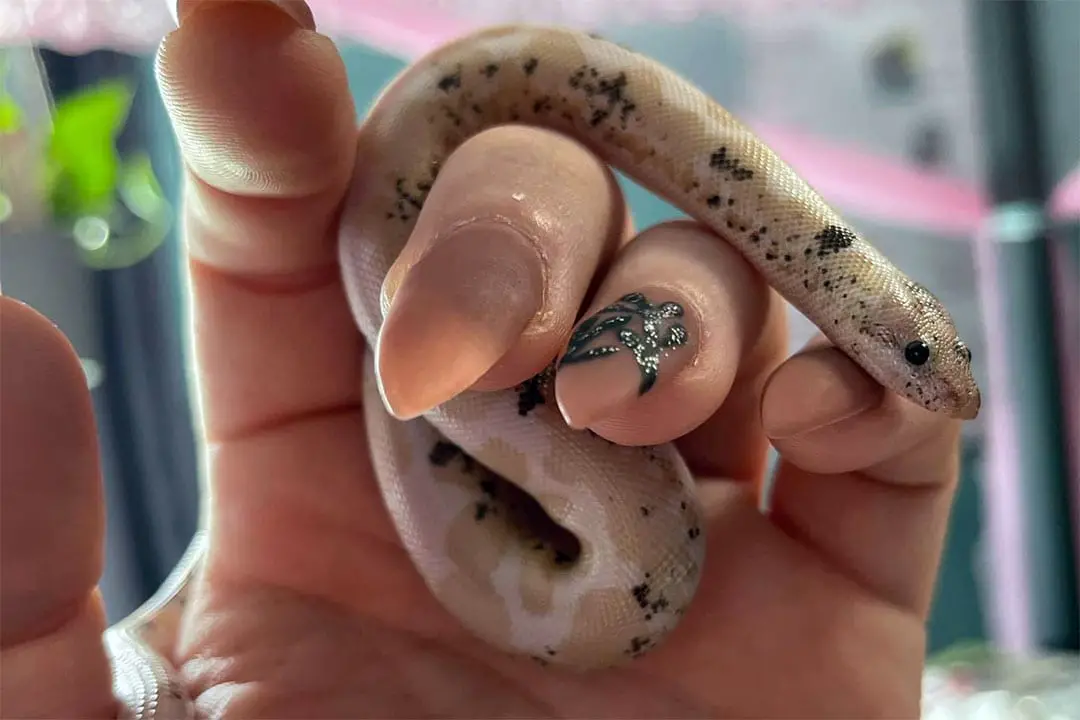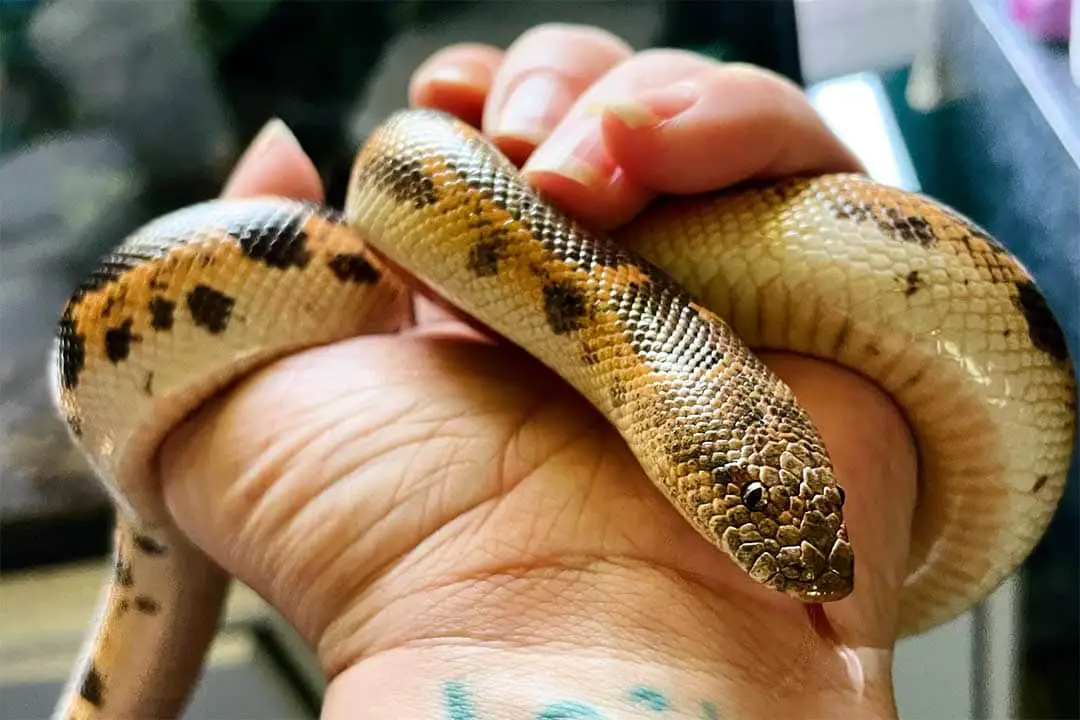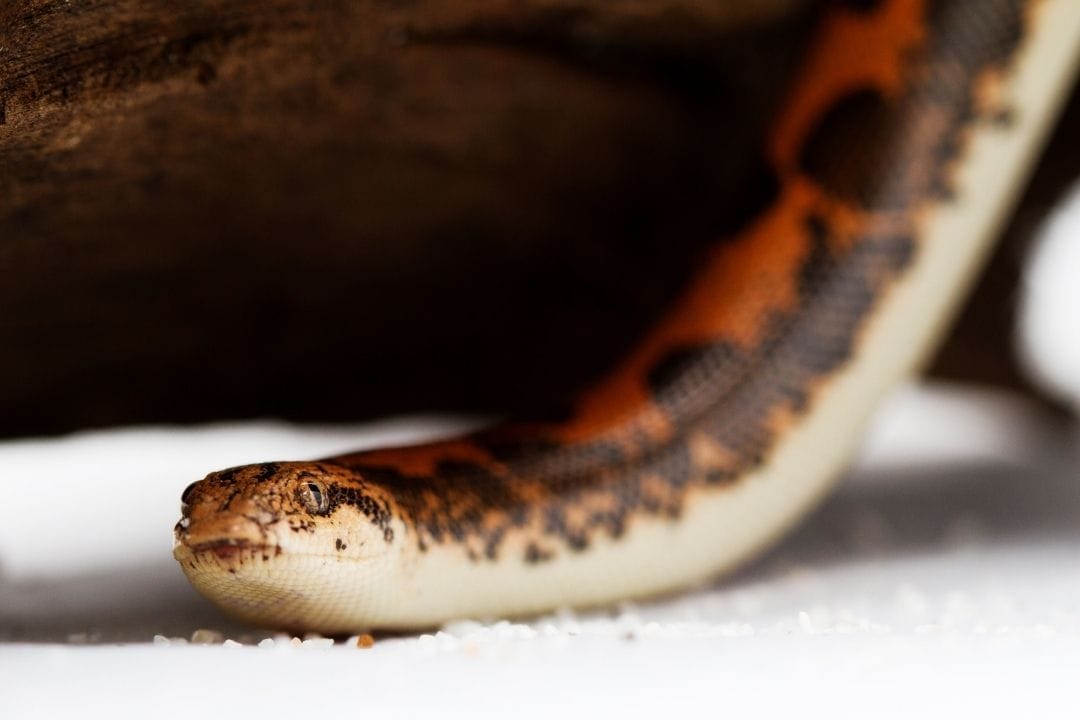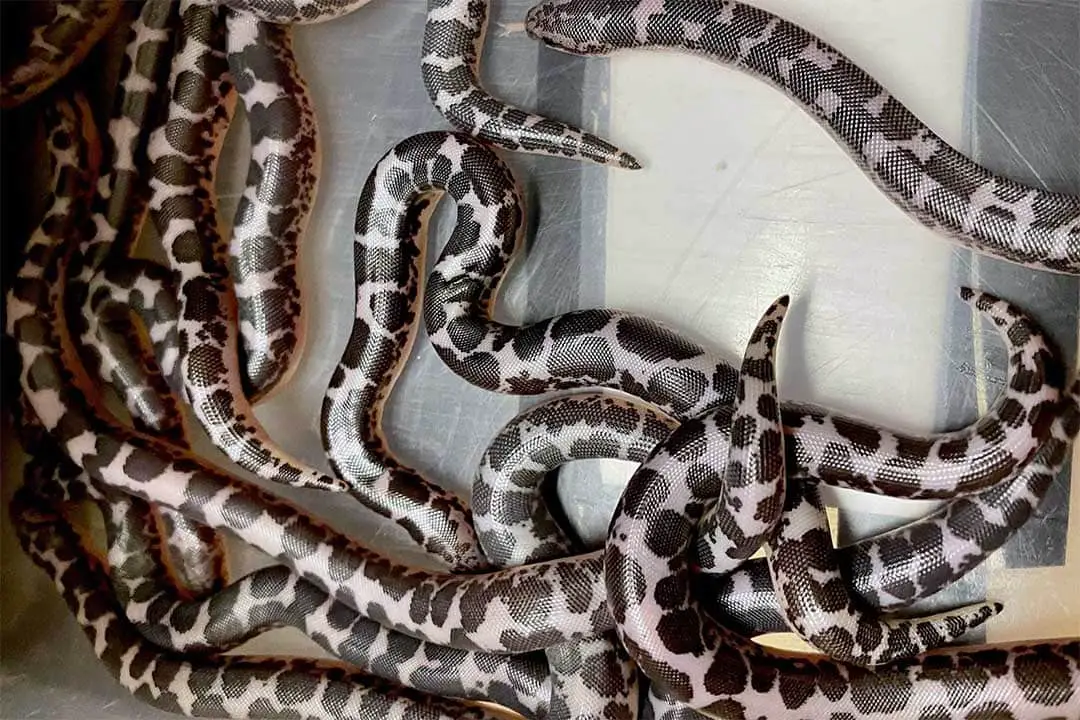You may have seen some cute videos of the sand boa and now want one for yourself. You may be wondering what the temperament of this small species of snake is like.
Are kenyan sans boas docile?
Kenyan sand boas are usually docile and easy to handle.
Everything you need to know about caring for Kenyan Sand Boas in captivity:
Read our Kenyan Sand Boa Care Sheet (Complete Guide)
Wild Kenyan Sand Boas
In the wild, Kenyan sand boas – Eryx colubrinus – are found mainly in eastern Africa in Kenya, but they can be found in other countries. They prefer lower altitudes and areas with loose, sandy soil.
Females reach a maximum of 32 inches, but males rarely top 15 inches. They hunt for rodents, lizards, and small birds in the wild. They typically kill with constriction, but they have been known to consume prey live.
They will typically pull prey under the sand to help suffocate it. They are typically most active at night. Another common name for this snake is the East African sand boa.
This is because they can be found in the sandy areas of many countries including Egypt, Sudan, and Eritrea.
Kenyan Sand Boas in Captivity
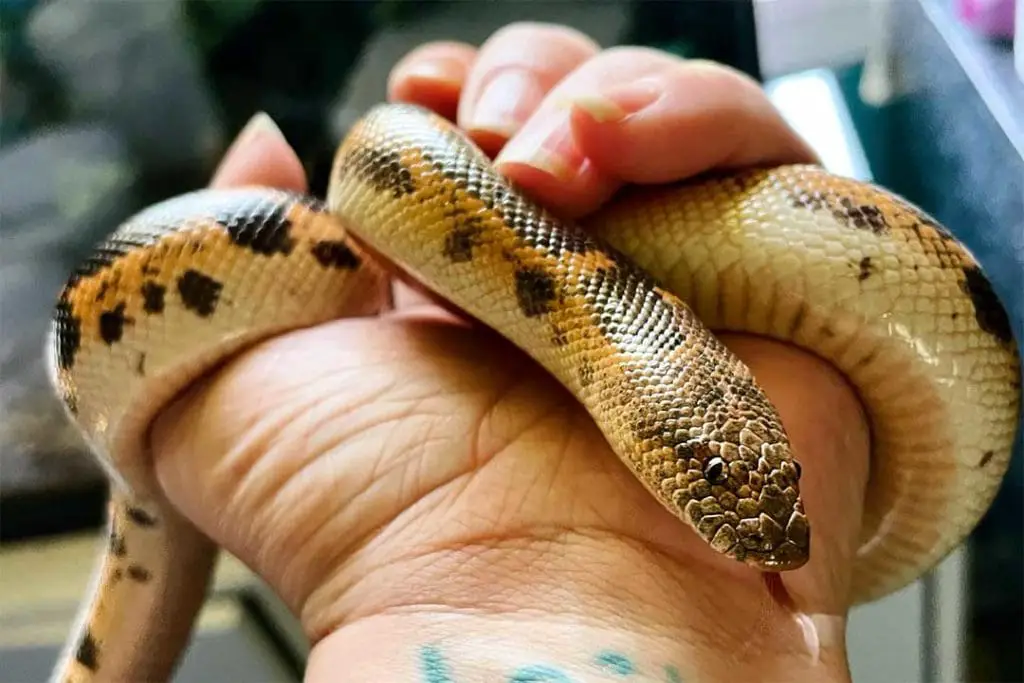
Sand boas are a very popular pet. They are becoming very popular in the pet trade, and you can easily find many beautiful color morphs out there like albino and striped.
Just make sure you get a captive-bred animal.
Not only are they healthier and easier to tame, but you don’t put the species at risk. While the species isn’t listed as being of concern, they are still at risk of population loss from the pet trade.
They are one of the smallest snakes commonly kept as pets, and they make an excellent snake for beginners. They make a good first pet and are easy to keep.
Temperament of Captive Snakes
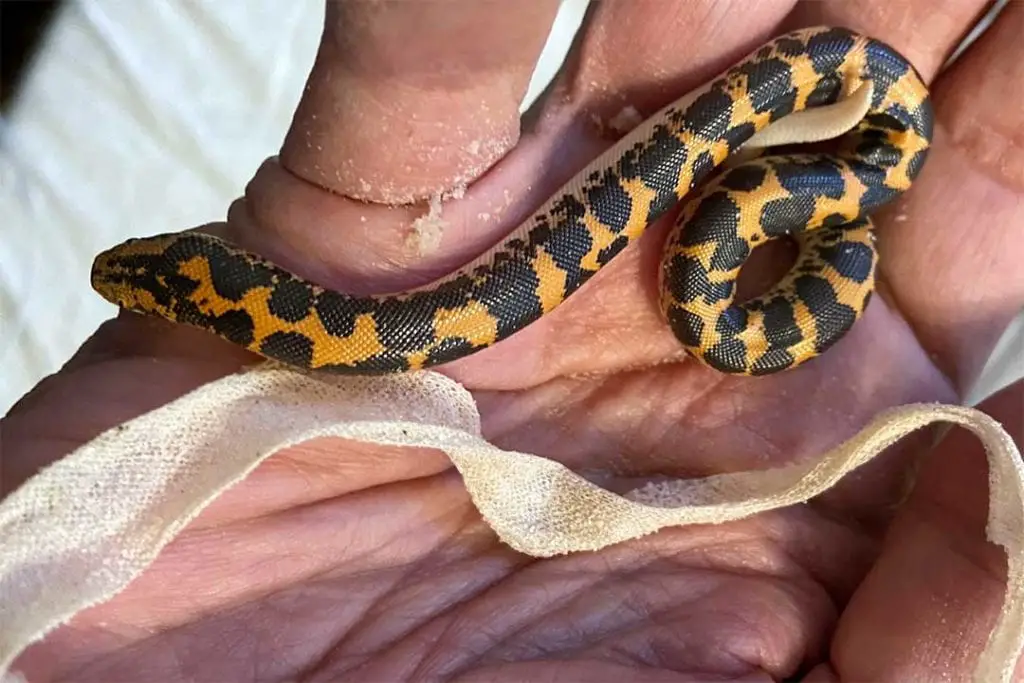
Kenyan sand boas are very docile snakes as adults. Most tolerate handling well. Some individuals will be more skittish. You may notice the snake jerk or wiggle to attempt to escape.
So long as you handle them often in a positive manner, they will calm down over time. The biggest thing to note is that most sand boas have a very strong feeding response.
They are ambush predators, so they will try to strike for food at the tiniest provocation. This shouldn’t hurt more than a cat scratch, but you should still be cautious.
Never approach a sand boa from above or at the front third of its body. Try to aim to pick it up at the mid-body. You should gently approach from the side and lift it slowly.
Be sure to support as much of the snake as you can. You should handle your snake a few times a week. Just watch for signs of stress like a loss of appetite or hostility. A hostile snake will adopt a defensive posture when it sees you. This means it will raise up and prepare to bite you.
How to Handle a Sand Boa
Handling is important for captive snakes so that you can perform basic care like moving them out of their enclosure to clean it without stress. It is also a chance to examine your snake closely and make sure it is healthy.
Like all snakes, Kenyan sand boas should never be approached from above or squeezed.
You should also consider hook training, which is when you gently touch your snake with a snake hook or paper towel tube before you try to handle them. This helps your snake learn that you are not bringing food.
Handling sessions should be at least once a week, but you can do a few times a week. Just watch for signs of stress.
To start a handling session, make sure your snake is awake.
Since snakes don’t have eyelids, the way to tell is to see if the tongue is out or if it seems to be moving. Next, approach slowly from the middle of the snake to give it time to see you.
Keep your hand to the side of the animal, and gently lift if from the middle. Support as much of the snake and do not squeeze it. A new or young snake may wiggle or jerk.
Keep calm and do not drop the snake. Let it calm down and explore a bit before you return it to the enclosure. Keep handling sessions brief, and extend them as the animal calms down and learns that you won’t hurt it.
Many snakes do seem to enjoy a chance to explore new areas under supervision. Just keep your snake in your hands since they are escape artists.
Bites
While sand boas are typically docile, they can bite. Sand boas have a strong feeding response and they also bite to defend themselves. They are very small animals and are not venomous, so this isn’t dangerous.
They will likely strike anytime they think you have food or if they are startled. This can be avoided by using hook training and making sure the animal is awake before you begin handling them. If you are bitten by your snake it is important you don’t jerk or try to pull them off.
Stay calm and wait for the animal to release you. If it was a defensive bite this should be quick. If it was a feeding response it might take a bit for the snake to realize you are too big to eat.
If you pull away or drop the snake both you and the snake could be hurt. Pulling away will make your wounds worse and may break the snake’s jaw or teeth.
Once the animal lets go, return it to the enclosure and go wash any wound. Basic first aid is enough for bites since these snakes can only bite so hard.
Summary
Sand boas are typically docile snakes that take to handling well. The small size of this species means they are one of the easiest for beginners.
If you would like this species, just note that they have a strong feeding response.
As ambush predators, these snakes will try to strike anything that might be food. If you have owned a sand boa, pleas leave a comment below. If you have any question as well, be sure to ask.
